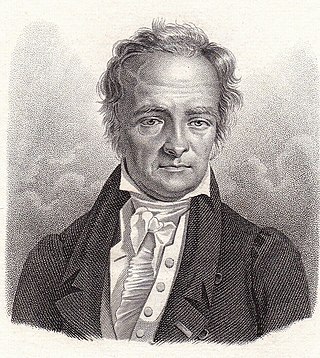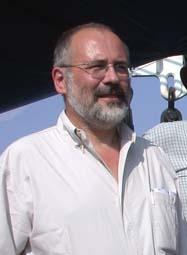Related Research Articles

The Jardin des plantes, also known as the Jardin des plantes de Paris when distinguished from other jardins des plantes in other cities, is the main botanical garden in France. The term Jardin des plantes is the official name in the present day, but it is in fact an elliptical form of Jardin royal des plantes médicinales, which is related to the original purpose of the garden back in the 17th century.

Bernard-Germain-Étienne de La Ville-sur-Illon, comte de Lacépède or La Cépède was a French naturalist and an active freemason. He is known for his contribution to the Comte de Buffon's great work, the Histoire Naturelle.

The French National Museum of Natural History, known in French as the Muséum national d'histoire naturelle, is the national natural history museum of France and a grand établissement of higher education part of Sorbonne Universities. The main museum, with four galleries, is located in Paris, France, within the Jardin des Plantes on the left bank of the River Seine. It was formally founded in 1793, during the French Revolution, but was begun even earlier in 1635 as the royal garden of medicinal plants. The museum now has 14 sites throughout France.

Louis Augustin Guillaume Bosc was a French botanist, invertebrate zoologist, and entomologist.

Guillaume-Antoine Olivier was a French entomologist and naturalist.

Conchology is the study of mollusc shells. Conchology is one aspect of malacology, the study of molluscs; however, malacology is the study of molluscs as whole organisms, whereas conchology is confined to the study of their shells. It includes the study of land and freshwater mollusc shells as well as seashells and extends to the study of a gastropod's operculum.

François Auguste Péron was a French naturalist and explorer.

Auguste Henri André Duméril was a French zoologist. His father, André Marie Constant Duméril (1774–1860), was also a zoologist. In 1869 he was elected as a member of the Académie des sciences.
Jacques Pucheran was a French zoologist born in Clairac. He was a grandnephew to physiologist Étienne Serres (1786-1868).

Pierre-Justin-Marie Macquart was a French entomologist specialising in the study of Diptera. He worked on world species as well as European and described many new species.

Philippe Dautzenberg was a Belgian malacologist, a biologist who specializes in the branch of invertebrate zoology that deals with mollusks. He was an amateur and autodidact, who was actually the owner of a carpet and soft furnishings factory. He was also a devoted family man with 12 children.

The Natural History Museum of Geneva is a natural history museum in Geneva, Switzerland.
Pierre Auguste Joseph Drapiez was a Belgian naturalist. The standard author abbreviation Drapiez is used to indicate this person as the author when citing a botanical name.
Cernuella aginnica is a species of small air-breathing land snail, a terrestrial pulmonate gastropod mollusk in the family Geomitridae.

Theodore Wells Pietsch III is an American systematist and evolutionary biologist especially known for his studies of anglerfishes. Pietsch has described 72 species and 14 genera of fishes and published numerous scientific papers focusing on the relationships, evolutionary history, and functional morphology of teleosts, particularly deep-sea taxa. For this body of work, Pietsch was awarded the Robert H. Gibbs Jr. Memorial Award in Systematic Ichthyology by the American Society of Ichthyologists and Herpetologists in 2005. Pietsch has spent most of his career at the University of Washington in Seattle as a professor mentoring graduate students, teaching ichthyology to undergraduates, and curating the ichthyology collections of the UW Burke Museum of Natural History and Culture.
Manaria atlantica is a species of sea snail, a marine gastropod mollusk in the family Eosiphonidae, the true whelk and their alliess.

Euthria cumulata is a species of sea snail, a marine gastropod mollusk in the family Buccinidae, the true whelks.

Enigmaticolus is a genus of sea snails, marine gastropod mollusks in the family Eosiphonidae, the true whelks and their allies.

Philippe Bouchet is a French biologist whose primary scientific fields of study are malacology and taxonomy. He works at the Muséum National d'Histoire Naturelle in Paris. He is also a Commissioner of the International Commission on Zoological Nomenclature.
Louis Roule was a French zoologist born in Marseille.
References
- ↑ "Fraussen, Koen, 1965-..." viaf.org. Retrieved 9 February 2023.
- ↑ van Zon, Hans (9 April 2023). "Wat het strand ons kan leren: van simpele zeepier tot oeroude fossiel". Algemeen Dagblad . Retrieved 15 October 2023.
- 1 2 Faugère, Elsa (15 December 2012). "Échanges de coquillages entre amateurs et professionnels: L'économie morale des sciences naturalistes". Techniques & Culture (59): 206–223. doi: 10.4000/tc.6652 . Retrieved 5 February 2023.
- ↑ Rivera, Luisa. "Species Sleuths: Amateur Naturalists Spark a New Wave of Discovery". Yale E360. Retrieved 5 February 2023.
- ↑ Houart, Roland (20 October 2010). "Schelpen aan de Belgische kust" (PDF). Novopex. Belgian Malacological Society. 11 (1): 93–94. ISSN 1375-7474 . Retrieved 5 February 2023.
- ↑ "Mêler biologie moléculaire et morphologie pour en découdre avec la systématique des Photinae…". Muséum national d'Histoire naturelle (in French). 26 August 2017. Retrieved 5 February 2023.
- ↑ "Koen Fraussen: Shellers From the Past and the Present". Conchology. Retrieved 5 February 2023.